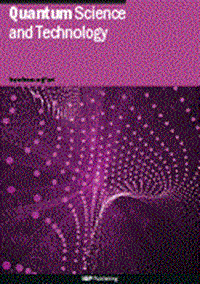荧光分子中单量子水平的混合界面
IF 5
2区 物理与天体物理
Q1 PHYSICS, MULTIDISCIPLINARY
引用次数: 0
摘要
我们从理论上研究了单个荧光分子作为混合量子光学器件,其中多个外部激光源对振动态施加控制。在高饱和状态下,振动自由度和电子自由度之间建立了相干相互作用,分子可以模拟多个腔QED模型,其中特定的振动模式扮演腔模式的角色。在将系统转变为量子拉比模型模拟模拟器的具体示例中,稳态表现出振动双模态,导致高度非经典振动猫态的统计混合。将我们的范例应用于具有突出空间不对称性的分子,并将光学激发与太赫兹(IR)驱动相结合,该系统可以变成一个单光子传感器。讨论了基于与亚波长太赫兹贴片天线或谐振超材料耦合的两种可能实现。简而言之,这项工作评估了分子作为光力学量子工具箱的作用,用于创建电子、光子和振动的混合纠缠态,从而实现在非常不同的能量尺度上的频率转换。本文章由计算机程序翻译,如有差异,请以英文原文为准。
Hybrid interfaces at the single quantum level in fluorescent molecules
We theoretically investigate a single fluorescent molecule as a hybrid quantum optical device, in which multiple external laser sources exert control of the vibronic states. In the high-saturation regime, a coherent interaction is established between the vibrational and electronic degrees of freedom, and molecules can simulate several cavity QED models, whereby a specific vibrational mode plays the role of the cavity mode. Focusing on the specific example where the system is turned into an analogue simulator of the quantum Rabi model, the steady state exhibits vibrational bi-modality resulting in a statistical mixture of highly non-classical vibronic cat states. Applying our paradigm to molecules with prominent spatial asymmetry and combining an optical excitation with a THz(IR) driving, the system can be turned into a single photon transducer. Two possible implementations are discussed based on the coupling to a subwavelength THz patch antenna or a resonant metamaterial. In a nutshell, this work assesses the role of molecules as an optomechanical quantum toolbox for creating hybrid entangled states of electrons, photons, and vibrations, hence enabling frequency conversion over very different energy scales.
求助全文
通过发布文献求助,成功后即可免费获取论文全文。
去求助
来源期刊

Quantum Science and Technology
Materials Science-Materials Science (miscellaneous)
CiteScore
11.20
自引率
3.00%
发文量
133
期刊介绍:
Driven by advances in technology and experimental capability, the last decade has seen the emergence of quantum technology: a new praxis for controlling the quantum world. It is now possible to engineer complex, multi-component systems that merge the once distinct fields of quantum optics and condensed matter physics.
Quantum Science and Technology is a new multidisciplinary, electronic-only journal, devoted to publishing research of the highest quality and impact covering theoretical and experimental advances in the fundamental science and application of all quantum-enabled technologies.
 求助内容:
求助内容: 应助结果提醒方式:
应助结果提醒方式:


